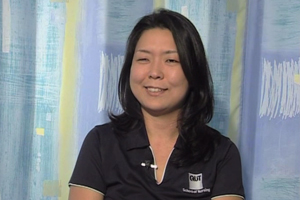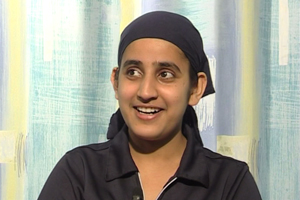Establishing Professional Relationships
The length of learning-teaching relationships varies widely, eg. it can be anything from a semester-long tutorial group to a short focussed interaction between a workplace supervisor and a student. Therefore it is important to have some ’ice breaking’ strategies for both student and staff alike - especially for those relationships that are short term in nature. Open ended questions that are consciously formulated are efficient and effective ways to help establish and promote a positive learning relationship.
For staff they can indicate to learners:
- a interest in students’ learning needs/objectives
- provide insight into the historical clinical context of students
- provide a background for ‘where students are coming from’
- generally set the scene for the future
For students they can indicate to staff:
- a willingness to learn
- an interest in the discipline
- provide a insight into ‘where the clinician is coming from’
- an enthusiasm towards the upcoming learning experience…
Ultimately these questions and responses start a conversation of learning.
![]() View some ideas on useful ‘ice breaker’ questions for students and workplace supervisors.
View some ideas on useful ‘ice breaker’ questions for students and workplace supervisors.
Establishing professional relationships in the workplace: Ice-breaker questions
|
Students |
Workplace Supervisors |
|
|
![]() Read our Hints and Tips Sheet for more strategies on developing rapport.
Read our Hints and Tips Sheet for more strategies on developing rapport.
Building rapport: Hints and tips
Smile. A sincere smile demonstrates friendliness approachability better that any other action. Make your smile sincere by visualizing yourself interacting positively with the person you’ve just met.
Make eye contact. Really look at the person, focusing on the individual, rather than on your own needs, desires, or agenda.
Use appropriate non-verbal cues to demonstrate openness to the other person’s ideas. Lean forward slightly to show interest in what the person has to say. Don’t cross your arms or put your hands on your hips. These postures send signals of resistance.
Demonstrate enthusiasm for the topics that concern the other person. Express your interest by asking relevant questions to help you better understand the person’s point of view. Pay attention to the answers, bringing up related points that add value to the conversation.
Look for common ground. Emphasize the areas and points about which you both agree.
Respect the other person’s right to an opinion, even if it differs from your own. “Agree to disagree” when your viewpoints differ so much that they can’t be reconciled. This is a key element in developing rapport despite differences.
Adapted from How to Develop Immediate Rapport | eHow.com
http://www.ehow.com/how_2094303_develop-immediate-rapport.html#ixzz0ygfWuXlf
Watch these Videos for practical suggestions from students on getting to know patients and working effectively with staff in the clinical environment.









